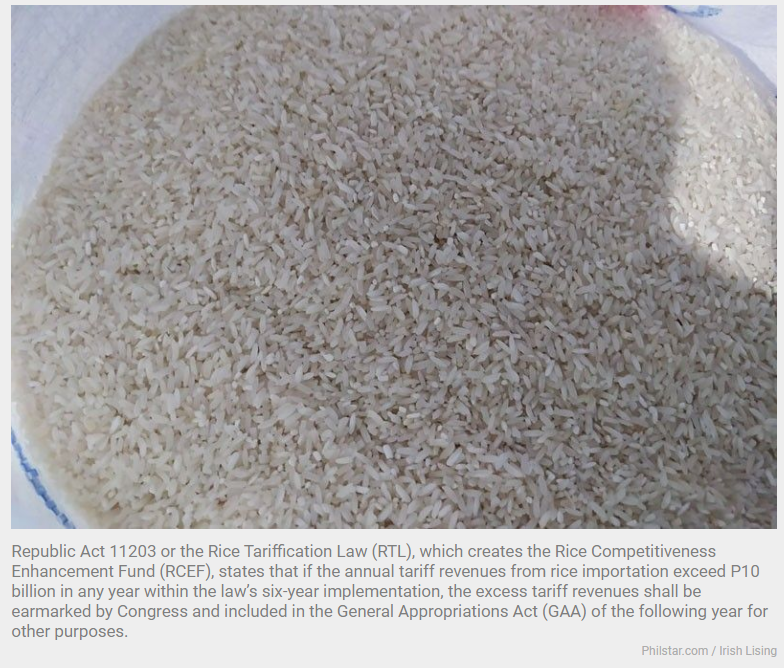Philippines: Distribution of excess rice tariffs to begin next week
MANILA, Philippines — The Department of Agriculture (DA) will begin the distribution of excess rice tariffs collected in the past two years as cash assistance to rice farmers next week.
In a phone interview, Agriculture Undersecretary Ariel Cayanan said the distribution would officially start on Oct. 21 in Guagua, Pampanga.
Republic Act 11203 or the Rice Tariffication Law (RTL), which creates the Rice Competitiveness Enhancement Fund (RCEF), states that if the annual tariff revenues from rice importation exceed P10 billion in any year within the law’s six-year implementation, the excess tariff revenues shall be earmarked by Congress and included in the General Appropriations Act (GAA) of the following year for other purposes.
The excess tariffs collected in 2019 and 2020, amounting to P7.6 billion, will be released as cash assistance to rice farmers.
Under the RCEF-Rice Farmers Financial Assistance Program (RCEF-RFFA), eligible rice farmers tilling two hectares and below will receive a cash assistance of P5,000.
Cayanan said the cash assistance program would benefit around 1.5 million rice farmers all over the country.
“We’re targeting the whole of October until November, we hope to distribute it all,” Cayanan said in Filipino.
Agriculture Secretary William Dar recently issued the implementing guidelines for the implementation of the RCEF-RFFA for this year.
Under the guidelines, rice farmers to benefit from the program should be registered in the updated Registry System for Basic Sectors in Agriculture (RSBSA).
The cash assistance will be distributed through government financial institutions (GFIs).
The guidelines state that GFIs may use various modes for the distribution and payment of the RCEF-RFFA grants.
These include interventions monitoring card (IMC) and credit to account or e-wallets maintained with Bangko Sentral ng Pilipinas (BSP)-supervised financial institutions.
GFIs may also utilize conduits, particularly countryside financial institutions, cooperatives, accredited remittance centers, ATMs managed by other rural banks, and other conduits that the DA and the GFI may agree upon.
Dar said the program aims to provide temporary relief to eligible farmers throughout the implementation years of the RTL.
Amid the implementation of the law, farmers have been hit by dropping farmgate prices of palay or unhusked rice.
Figures from the Federation of Free Farmers showed that palay prices were trading at P12 to P15 per kilo last month, based on the initial survey among FFF chapters in Pangasinan, Tarlac, Mindoro Occidental, Negros Occidental, Zamboanga Sibugay, Davao del Norte and South Cotabato.
Latest data from the Philippine Statistics Authority also showed that farmgate prices of palay averaged at P16.94 per kilo from January to June, down 2.8 percent from the same period last year.
Figures earlier presented by Cayanan showed that the average farmgate price of fresh or wet palay across all regions, as of the second week of September, registered at P14.89 a kilo, with P9 being the minimum price and P19 per kilo being the maximum.
Cayanan, however, emphasized that the average farmgate price of dry palay is higher at P18.10 per kilo, with P12 per kilo being the minimum and P23 per kilo being the maximum price.
Source: https://www.philstar.com/business/2021/10/13/2133655/distribution-excess-rice-tariffs-begin-next-week


 English
English




